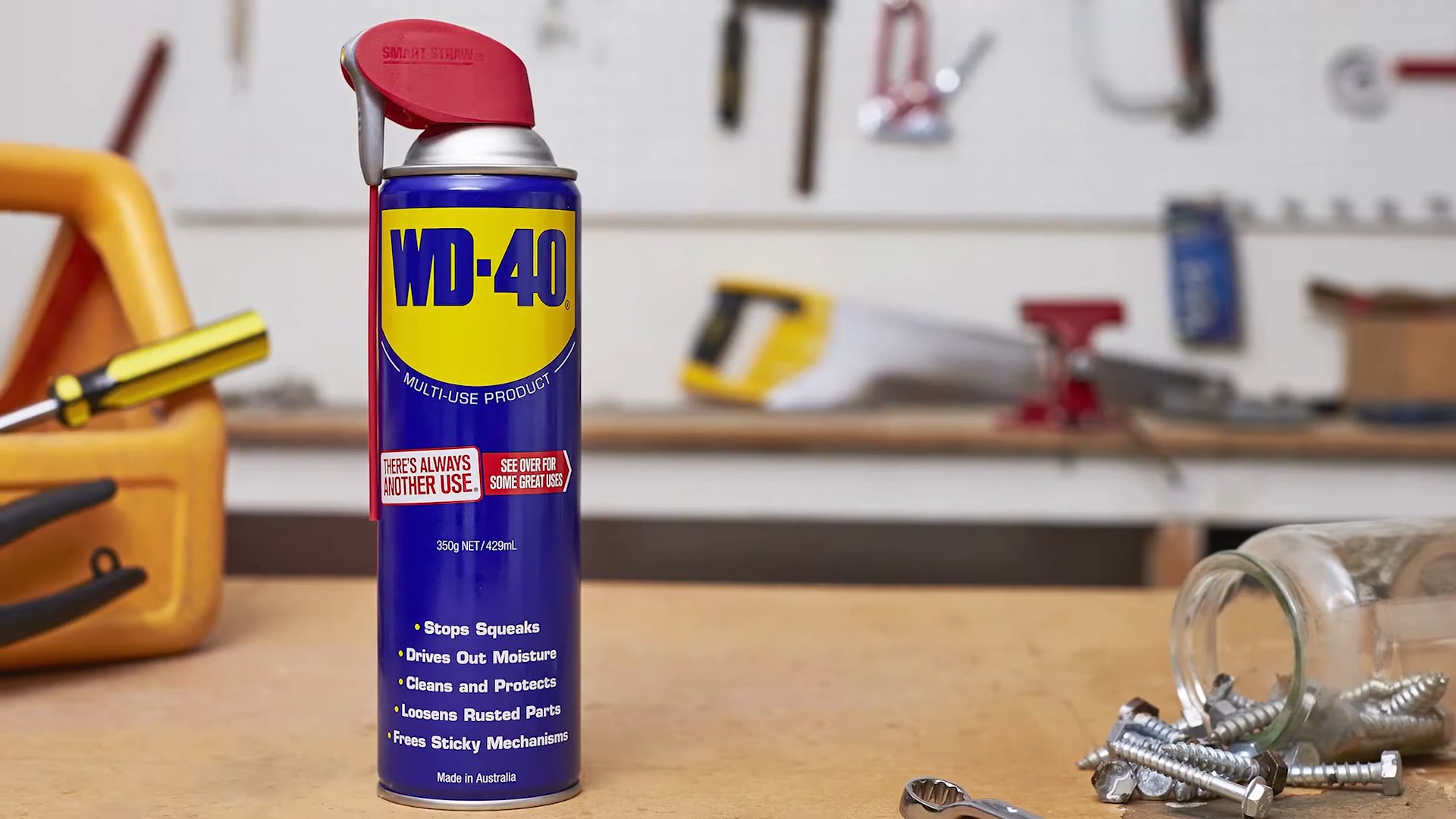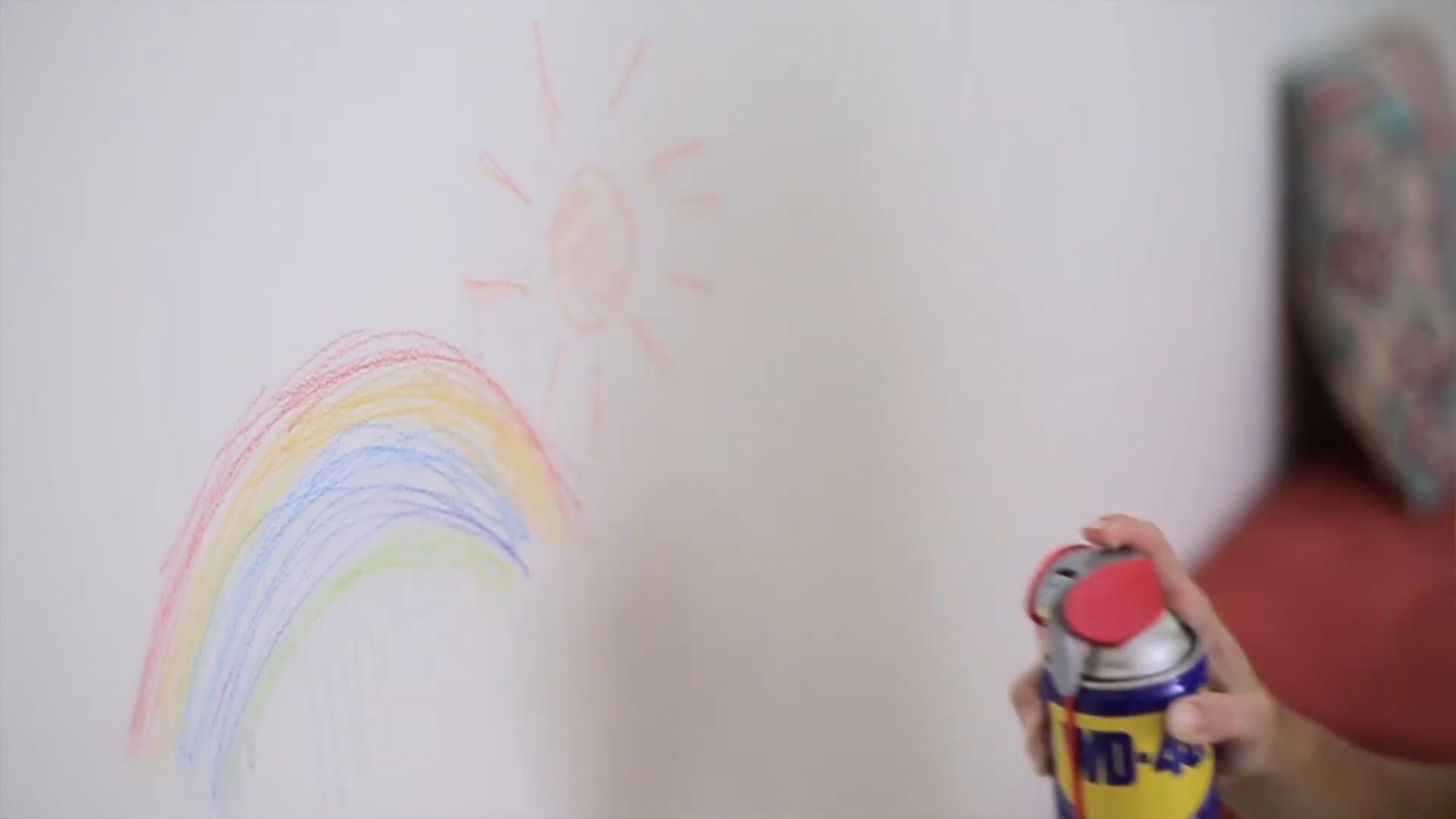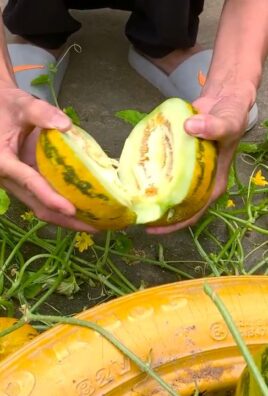WD-40 home hacks – who knew this can of magic could do so much more than just silence squeaky hinges? I’m constantly amazed by the versatility of everyday items, and WD-40 is definitely a superstar in that category. Forget spending a fortune on specialized cleaning products and tools; with a little ingenuity, you can unlock a whole new world of DIY solutions right in your own home.
For decades, WD-40 has been a staple in garages and workshops, renowned for its lubricating and rust-busting properties. But its uses extend far beyond the toolbox. Think of it as a secret weapon against stubborn stains, sticky messes, and even unwanted pests! From removing crayon marks on walls (we’ve all been there, right?) to protecting your garden tools from rust, the possibilities are truly endless.
In this article, I’m going to share some of my favorite WD-40 home hacks that will save you time, money, and a whole lot of frustration. Why spend hours scrubbing or throwing away items when a quick spritz of WD-40 can do the trick? Let’s dive in and discover the surprising power of this household essential!

Unlock the Power of WD-40: Unexpected Home Hacks You Need to Know!
Hey there, fellow DIY enthusiasts! I’m always on the lookout for clever ways to make life easier and more efficient around the house. And let me tell you, WD-40 is a true unsung hero in the world of home hacks. It’s not just for squeaky hinges anymore! I’ve compiled a list of some of the most surprising and effective ways you can use this magical spray to tackle everyday problems. Get ready to be amazed!
WD-40: Your All-Purpose Problem Solver
Before we dive into the specific hacks, let’s talk about why WD-40 is so versatile. It’s primarily a water-displacing solvent, meaning it’s excellent at removing moisture and preventing rust. But it also acts as a lubricant, cleaner, and protectant. This unique combination of properties makes it perfect for a wide range of tasks.
Removing Stubborn Stickers and Residue
We’ve all been there: battling a stubborn sticker that refuses to peel off cleanly. WD-40 to the rescue!
What you’ll need:
* WD-40
* A clean cloth or paper towel
* A plastic scraper or credit card (optional)
Step-by-step instructions:
1. Spray it on: Generously spray the sticker and the surrounding area with WD-40. Make sure the sticker is thoroughly saturated.
2. Let it soak: Allow the WD-40 to sit for at least 5-10 minutes. This gives it time to penetrate the adhesive and loosen the bond. For really stubborn stickers, you might even let it sit for 30 minutes or longer.
3. Peel and wipe: Gently start peeling the sticker from one corner. If it’s still resisting, spray a little more WD-40 underneath as you peel.
4. Remove residue: Once the sticker is removed, there will likely be some sticky residue left behind. Spray the residue with WD-40 and let it sit for a minute or two.
5. Wipe clean: Use a clean cloth or paper towel to wipe away the residue. For tougher residue, you can use a plastic scraper or credit card to gently scrape it off before wiping.
6. Final clean: Finally, clean the area with soap and water to remove any remaining WD-40 and prevent a slippery surface.
Cleaning and Protecting Stainless Steel
Stainless steel appliances look great, but they’re notorious for attracting fingerprints and smudges. WD-40 can help keep them looking their best.
What you’ll need:
* WD-40
* Two clean, soft cloths (microfiber cloths work best)
Step-by-step instructions:
1. Lightly spray: Lightly spray WD-40 onto one of the clean cloths. You don’t want to spray it directly onto the appliance, as this can lead to overspray and a greasy residue.
2. Wipe with the grain: Wipe the stainless steel surface with the damp cloth, following the grain of the metal. This will help prevent streaks.
3. Buff to a shine: Use the second clean, dry cloth to buff the surface to a shine. This will remove any excess WD-40 and leave a protective coating.
4. Repeat as needed: Repeat this process as needed to keep your stainless steel appliances looking their best.
Loosening Rusted Bolts and Screws
Dealing with rusted bolts and screws can be incredibly frustrating. WD-40 can help break down the rust and make them easier to remove.
What you’ll need:
* WD-40
* A wrench or screwdriver
* A hammer (optional)
Step-by-step instructions:
1. Apply WD-40: Generously spray the rusted bolt or screw with WD-40, making sure to get it into the threads.
2. Let it penetrate: Allow the WD-40 to sit for at least 15-30 minutes, or even longer for severely rusted fasteners. The longer it sits, the better it will penetrate the rust.
3. Try to loosen: Use a wrench or screwdriver to try to loosen the bolt or screw. Apply steady pressure, but don’t force it.
4. Tap with a hammer (optional): If the bolt or screw is still stuck, try gently tapping it with a hammer. This can help break up the rust and loosen the bond.
5. Reapply WD-40: If necessary, reapply WD-40 and let it sit for another 15-30 minutes.
6. Repeat until loose: Continue trying to loosen the bolt or screw, reapplying WD-40 and tapping with a hammer as needed, until it finally comes loose.
Removing Scuff Marks from Floors
Those pesky scuff marks on your floors can be a real eyesore. WD-40 can help you get rid of them quickly and easily.
What you’ll need:
* WD-40
* A clean cloth or paper towel
Step-by-step instructions:
1. Spray the scuff mark: Lightly spray the scuff mark with WD-40.
2. Wipe it away: Use a clean cloth or paper towel to wipe away the scuff mark. You may need to apply a little pressure and rub gently.
3. Clean the area: Once the scuff mark is gone, clean the area with soap and water to remove any remaining WD-40 and prevent a slippery surface.
Important Note: Always test WD-40 in an inconspicuous area first to make sure it doesn’t damage the finish of your floor.
Waterproofing Shoes and Boots (Temporarily)
While not a permanent solution, WD-40 can provide a temporary layer of water resistance to your shoes and boots.
What you’ll need:
* WD-40
* A well-ventilated area
Step-by-step instructions:
1. Clean your shoes: Make sure your shoes are clean and dry before applying WD-40.
2. Spray evenly: In a well-ventilated area, spray your shoes evenly with WD-40, holding the can about 6-8 inches away.
3. Let them dry: Allow your shoes to dry completely before wearing them. This may take several hours.
Important Note: This is a temporary solution and will need to be reapplied after exposure to water. Also, WD-40 may affect the color or texture of some materials, so test it in an inconspicuous area first.
Preventing Snow from Sticking to Your Shovel
Shoveling snow is already a chore, but it’s even worse when the snow keeps sticking to your shovel. WD-40 can help prevent this.
What you’ll need:
* WD-40
* Your snow shovel
Step-by-step instructions:
1. Spray the shovel: Before you start shoveling, spray the blade of your snow shovel with WD-40.
2. Reapply as needed: Reapply WD-40 as needed throughout your shoveling session to keep the snow from sticking.
Cleaning Toilet Bowls
Yes, you read that right! WD-40 can actually help clean your toilet bowl.
What you’ll need:
* WD-40
* A toilet brush
Step-by-step instructions:
1. Spray the bowl: Spray WD-40 around the inside of the toilet bowl, focusing on any stains or rings.
2. Let it sit: Allow the WD-40 to sit for a few minutes.
3. Scrub and flush: Use a toilet brush to scrub the bowl, then flush.
Lubricating Garden Tools
Keep your garden tools in top condition by lubricating them with WD-40.
What you’ll need:
* WD-40
* A clean cloth
Step-by-step instructions:
1. Clean the tools: Clean your garden tools to remove any dirt or debris.
2. Spray with WD-40: Spray the moving parts of your tools with WD-40.
3. Wipe off excess: Wipe off any excess WD-40 with a clean cloth.
Removing Crayon Marks from Walls
Kids love to express their creativity, but sometimes that creativity ends up on the walls. WD-40 can help you remove crayon marks.
What you’ll need:
* WD-40
* A clean cloth
Step-by-step instructions:
1. Spray the crayon marks: Lightly spray the crayon marks with WD-40.

Conclusion
So, there you have it – a treasure trove of unconventional yet incredibly effective WD-40 home hacks that will revolutionize your approach to everyday challenges. From banishing stubborn stains to silencing squeaky hinges and protecting your tools from rust, the versatility of this product is truly astounding. We’ve explored how this unassuming can of lubricant can become your secret weapon against a multitude of household woes, saving you time, money, and a whole lot of frustration.
But why is this DIY approach a must-try? Simply put, it’s about efficiency and resourcefulness. Instead of reaching for specialized (and often expensive) cleaning products or calling in a repair person for minor issues, you can leverage the power of WD-40 to tackle these problems yourself. It’s about empowering yourself to become a more self-sufficient homeowner and discovering the satisfaction of solving problems with your own ingenuity. Plus, many of these hacks utilize a product you likely already have on hand, making them incredibly convenient.
Don’t be afraid to experiment and adapt these WD-40 home hacks to suit your specific needs. For instance, if you’re dealing with particularly stubborn crayon marks, try letting the WD-40 sit for a few minutes before wiping it away. Or, if you’re using it to loosen a rusty bolt, consider applying heat with a hairdryer to further enhance its penetrating power. You can even use WD-40 to waterproof your shoes or boots! Just spray a light coat and let it dry completely. For a more pleasant scent, consider adding a few drops of your favorite essential oil to a cloth before wiping down surfaces treated with WD-40. Remember to always test in an inconspicuous area first, especially on delicate surfaces.
We’ve only scratched the surface of what’s possible with WD-40. The possibilities are truly endless, limited only by your imagination. We encourage you to embrace your inner DIY enthusiast and explore the full potential of this remarkable product.
Now, it’s your turn! We challenge you to try out these WD-40 home hacks and discover the magic for yourself. We’re confident that you’ll be amazed by the results. And most importantly, we want to hear about your experiences! Share your successes (and even your failures – we all learn from them!) in the comments below. Let us know which hacks worked best for you, any variations you tried, and any new uses you’ve discovered. Together, we can build a community of WD-40 aficionados and unlock even more hidden potential. So, grab a can, get creative, and let the DIY adventures begin!
Frequently Asked Questions (FAQs)
Is WD-40 safe to use around my home?
WD-40 is generally safe to use when following the manufacturer’s instructions and taking proper precautions. It’s essential to use it in a well-ventilated area to avoid inhaling the fumes. Avoid spraying it near open flames or heat sources, as it is flammable. Keep it out of reach of children and pets. When using it on surfaces that come into contact with food, be sure to thoroughly clean the surface afterward with soap and water. Always test WD-40 in an inconspicuous area first to ensure it doesn’t damage or discolor the material. While WD-40 is a useful tool, it’s important to remember that it is a chemical product and should be handled with care.
Can I use WD-40 on all types of surfaces?
No, WD-40 is not suitable for all surfaces. Avoid using it on delicate plastics, rubber, or certain painted surfaces, as it may cause damage or discoloration. Always test it in an inconspicuous area first to ensure compatibility. For sensitive materials, consider using a specialized lubricant or cleaner instead. It’s also not recommended for use on electrical components that are actively powered, as it could potentially cause a short circuit.
Will WD-40 damage my car’s paint?
While WD-40 can be used to remove tar, bugs, and other sticky residues from your car’s paint, it’s crucial to use it sparingly and with caution. Prolonged exposure or excessive application can potentially damage the clear coat. Always spray WD-40 onto a clean cloth and then gently wipe the affected area. Avoid spraying it directly onto the paint. After removing the residue, thoroughly wash the area with soap and water to remove any remaining WD-40. Consider using a dedicated car detailing product for optimal results and to protect your car’s paint.
How long does WD-40 last after it’s applied?
The longevity of WD-40’s effects depends on the application and environmental conditions. In general, it provides lubrication and protection for several weeks to a few months. However, factors like exposure to water, heat, or friction can shorten its lifespan. For applications requiring long-lasting lubrication, consider using a specialized grease or lubricant designed for extended performance. Regularly reapply WD-40 as needed to maintain its effectiveness.
Is WD-40 a good substitute for a dedicated lubricant?
WD-40 is a versatile product with lubricating properties, but it’s not always the best substitute for a dedicated lubricant. While it can loosen rusted parts and provide temporary lubrication, it’s not designed for heavy-duty or long-term lubrication. For applications requiring high performance and durability, such as machinery or automotive parts, it’s best to use a specialized lubricant formulated for those specific needs. WD-40 is more effective as a penetrating oil and rust preventative than a long-lasting lubricant.
Can WD-40 remove rust?
Yes, WD-40 can help remove rust from metal surfaces. Its penetrating properties allow it to loosen the rust and make it easier to scrub away. Apply WD-40 to the rusted area and let it sit for several minutes. Then, use a wire brush or steel wool to scrub away the rust. For stubborn rust, you may need to repeat the process or use a rust remover specifically designed for heavy-duty applications. After removing the rust, apply a protective coating of WD-40 or paint to prevent future corrosion.
What are some alternative uses for WD-40 that I might not know about?
Beyond the common uses, WD-40 can be used to:
* Remove gum from hair or carpets.
* Clean and polish stainless steel appliances.
* Waterproof leather shoes and boots.
* Remove crayon marks from walls.
* Loosen zippers that are stuck.
* Remove sticky residue from labels and tape.
* Prevent snow from sticking to shovels.
* Clean guitar strings.
* Remove lipstick stains from clothing.
Remember to always test in an inconspicuous area first to ensure it doesn’t damage the material.
Where can I buy WD-40?
WD-40 is widely available at most hardware stores, home improvement centers, automotive supply stores, and even some grocery stores. You can also purchase it online from various retailers. It typically comes in aerosol cans of varying sizes, as well as in liquid form for larger applications.
Is there a difference between WD-40 and WD-40 Specialist products?
Yes, WD-40 Specialist products are a line of specialized lubricants and cleaners designed for specific applications. While WD-40 Multi-Use Product is a versatile all-purpose product, the Specialist line offers enhanced performance and features for tasks such as lubricating machinery, cleaning electrical contacts, and removing rust. The Specialist line includes products like WD-40 Specialist Penetrant, WD-40 Specialist Dry Lube, and WD-40 Specialist Contact Cleaner. Choose the appropriate product based on your specific needs.
What should I do if I accidentally get WD-40 in my eyes?
If you accidentally get WD-40 in your eyes, immediately flush them with plenty of clean water for at least 15 minutes. If irritation persists, seek medical attention. It’s always a good idea to wear safety glasses or goggles when working with WD-40 to prevent accidental eye contact.




Leave a Comment